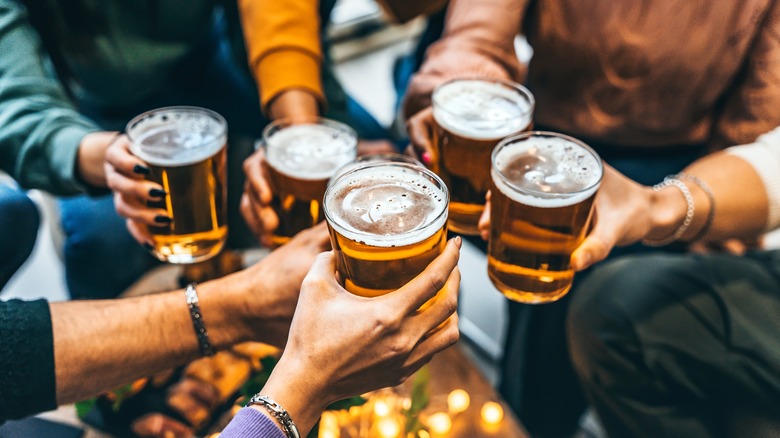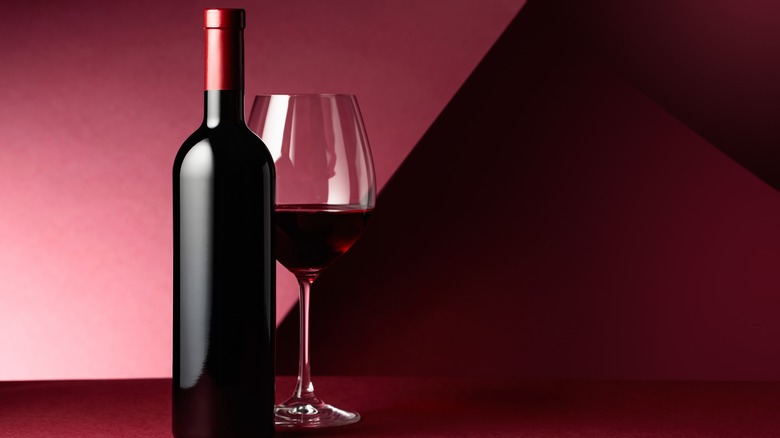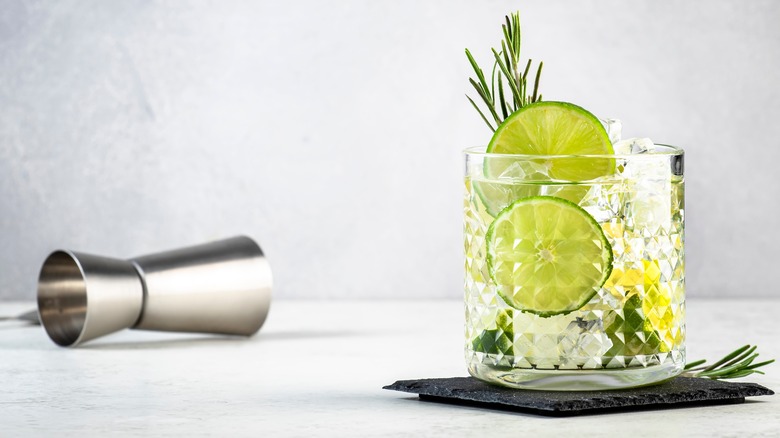The ABV Math For How Many Beers Equals One Bottle Of Wine
Different styles and brands of alcohol produce drinks that vary widely in alcohol by volume (ABV). If you've ever wondered how many beers you and your guests can drink before it equals a whole bottle of wine, in terms of potency, a little bit of math can help you out. To start with, a standard bottle of wine is 750 milliliters, or about 25.36 ounces, which equates to a little more than two 12-ounce cans of beer, but we need to factor ABV percentages into the equation.
According to the National Institutes of Health, the average ABV of a 12-ounce beer is about 5%, while that of a typical wine is 12%. However, in addition to the difference in potency, we also need to solve for the difference in container size. This can be accomplished via the following equation: multiply the container volume (in milliliters) by the ABV (as a percentage), and divide the sum by 1,000 (which represents units of alcohol).
If you're not the best at math, don't fear. The answer is that — on average — five beers equal one bottle of wine. Of course, not all beer styles or brands have the same ABV, so this equation can be switched up to fit the strength in your particular beer, whether it be a batch of craft brews or a few cans of light beer. You can even use the same math to measure the relative potency of beer to certain cocktails or bottles of other liquors.
How to use the equation for other drinks
You can use some approximate guidelines to adapt the equation to different beers. Light beers not only typically have fewer calories, but they also have a lower ABV (4.2% on average), according to the NIH. In this case, six beers are closer to the amount that would equal one bottle of wine. If, instead of a bottle of wine, you want to know how a beer compares to a 750-milliliter bottle of liquor, the same equation can be used. You'll just have to account for the liquor's strength, and most distilled spirits — like tequila, vodka, and whiskey — have around 40% ABV.
These types of equations are fun to figure out, but they shouldn't be confused with recommendations regarding how much alcohol should be consumed in a day. According to the Centers for Disease Control and Prevention, moderate drinking guidelines for men consist of a maximum of two drinks per day. For women, it's only one drink. A single serving size of alcohol varies according to the type, with a 12-ounce serving size for beer, 5 ounces for wine, and just a 1.5-ounce serving size for distilled liquor, per Alcohol.org. It might be interesting to figure out how much beer you can drink before it equates to a bottle of wine, but that doesn't mean you should actually try it.
How to figure out ABV in cocktails
Figuring out the ABV of a cocktail is a bit trickier, since these drinks often feature varying amounts of different alcoholic ingredients. It can be done, though, and once you know the ABV and the volume of a given cocktail — a gin and tonic, for example, totals at about six ounces per serving – you can use the golden equation to figure out its strength relative to a beer or a bottle of wine.
For this formula, the amount of alcohol in the drink should be divided by the total cocktail serving size, with the result multiplied by 100. So for a gin and tonic, the 2 ounces of gin would be divided by the six-ounce volume overall for a total of 0.33, which is then multiplied by 100 for an estimated ABV of 33%. For a cocktail bartenders see as a red flag, like a Long Island Iced Tea, the ABV is likely much higher and just might shock you. Many cocktails likely outpace a single bottle of wine in terms of ABV, due to the mix of several different liquors.



